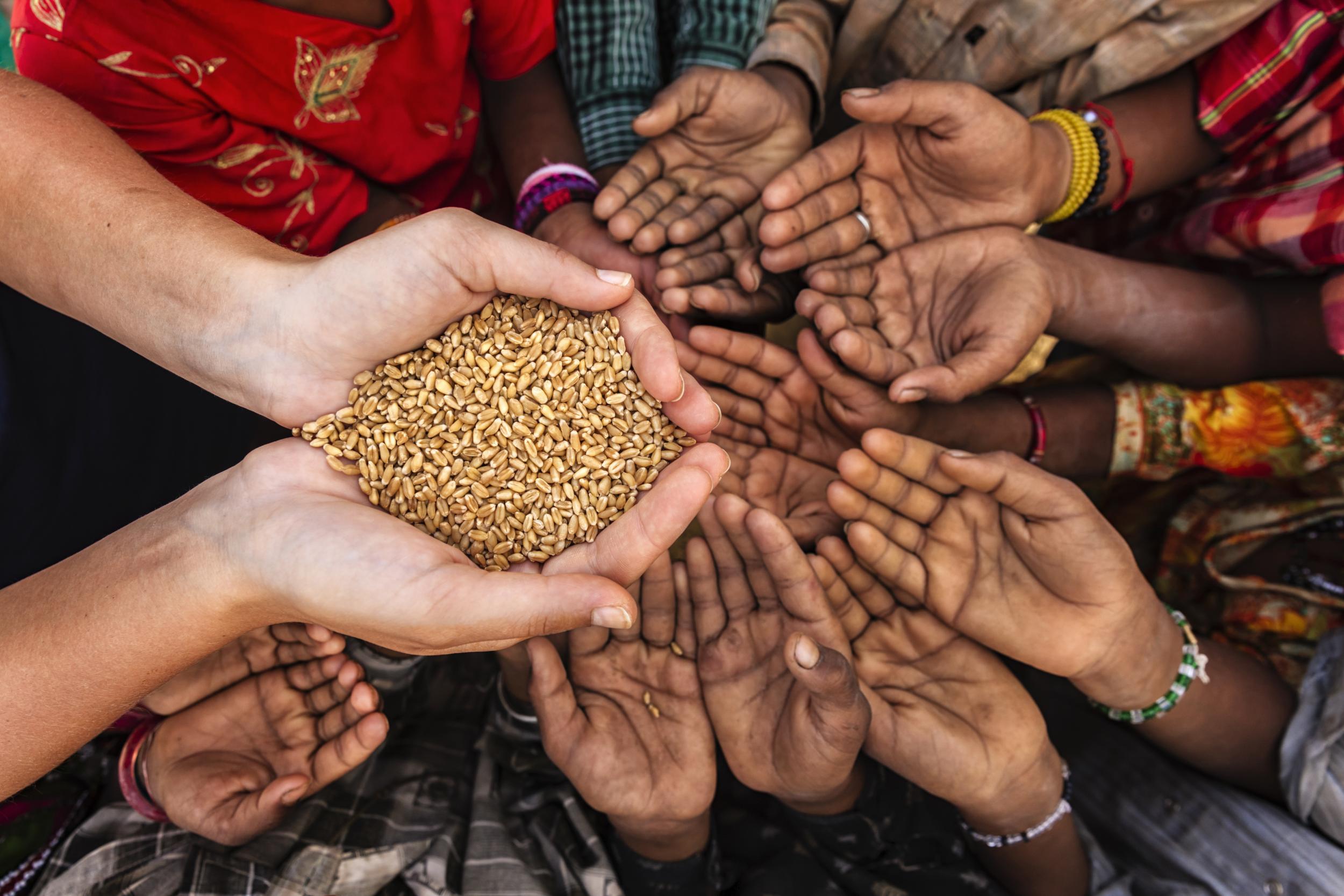Global hunger increasing even before pandemic, UN warns, putting Zero Hunger 2030 target in doubt
Covid-19 crisis could tip 130 million more people into chronic hunger by end of 2020, report finds

Global hunger was increasing even before the coronavirus pandemic, the United Nations has warned, putting its Zero Hunger 2030 target in doubt.
An annual study estimates almost 690 million people went hungry in 2019 – up by 10 million from 2018 and by nearly 60 million in five years.
The hungry are most numerous in Asia but expanding fastest in Africa, according to the latest edition of The State of Food Security and Nutrition in the World (SOFI).
High costs and low affordability also mean billions cannot eat healthily or nutritiously.
Across the globe, the Covid-19 crisis could tip over 130 million more people into chronic hunger by the end of 2020, the report predicts.
And flare-ups of acute hunger as a result of the pandemic could see this number escalate even further at times, it said.
The global study is produced jointly by the Food and Agriculture Organisation of the United Nations (FAO), the International Fund for Agriculture (IFAD), the United Nations Children’s Fund (UNICEF), the UN World Food Programme (WFP) and the World Health Organisation (WHO).
Writing in the foreword, the heads of the five agencies warned that “five years after the world committed to end hunger, food insecurity and all forms of malnutrition, we are still off track to achieve this objective by 2030”.
In the latest report, newly-accessible data for China and other populous countries have led to a substantial cut in estimates of the global number of hungry people, to the current 690 million.
However the study’s authors said there has been no change in the trend reported in past editions of the report, which shows that “after steadily diminishing for decades, chronic hunger slowly began to rise in 2014 and continues to do so”.
Asia remains home to the greatest number of undernourished (381 million), while Africa is second (250 million), followed by Latin America and the Caribbean (48 million), UN researchers found.
While Africa is the hardest-hit region in terms of undernourished people per percentage of population and becoming more so at 19.1 per cent.
Coronavirus: The global gap in education
Show all 12This is more than double the rate in Asia (8.3 per cent) and in Latin America and the Caribbean (7.4 per cent). On current trends, by 2030, Africa will be home to more than half of the world’s chronically hungry.
While it is too soon to assess the full impact of lockdowns and other containment measures, the report estimates that, at a minimum, another 83 million people, and possibly as many as 132 million, may go hungry in 2020 as a result of the economic recession triggered by Covid-19.
This means the world is not on track to achieve the UN sustainable development goal (SDG) of ending hungry by 2030.
The UN agencies present evidence that a healthy diet costs far more than $1.90/day - the international poverty threshold.
The latest estimates are that a “staggering” 3 billion people or more cannot afford a healthy diet.
The report suggests that if current food consumption patterns continue, the health costs associated with unhealthy diets are estimated to reach about $1.3 trillion per year by 2030.
The researchers urge a transformation of food systems to reduce the cost of nutritious foods and increase the affordability of healthy diets.
Subscribe to Independent Premium to bookmark this article
Want to bookmark your favourite articles and stories to read or reference later? Start your Independent Premium subscription today.

Join our commenting forum
Join thought-provoking conversations, follow other Independent readers and see their replies